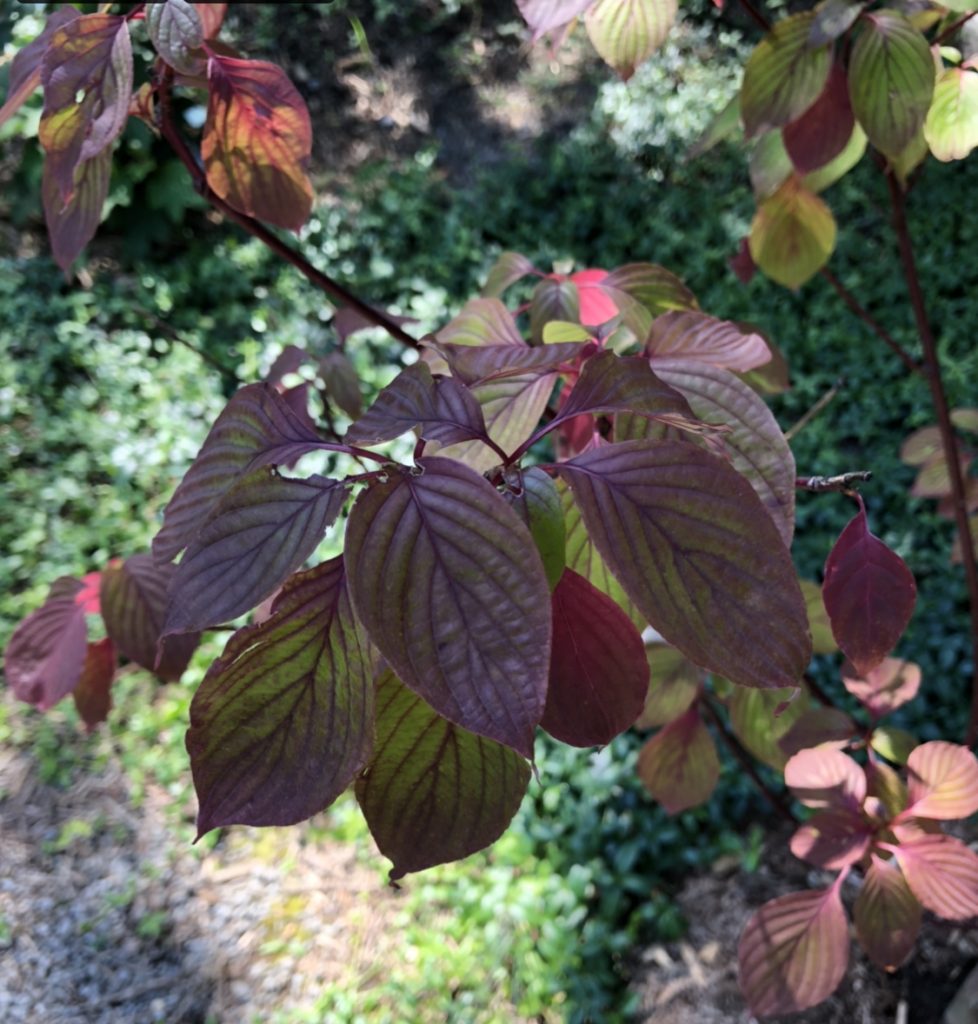
Hello – We planted a pagoda dogwood tree in the spring. It’s in part shade on the bottom of a gentle slope in a sheltered location backed by pine trees. It’s been doing very well. About 6 feet tall. Topsoil and compost in the hole plus a kind of a sandy gravel soil all around covered by periwinkle (previous owners’ idea). I’ve mulched to retain moisture and can see the trunk base (it’s not underground). But in the last two weeks the leaves have turned red. It’s very pretty, but concerning in July! Do you have any advice? Are we in an early fall? Is it possible heavy rains have overwhelmed it since the slope has been on the drier side before recent rains? I’ve read it can handle more alkaline soil than other dogwoods, so haven’t tested the soil. Should I move it before it dies? (A nearby oakleaf hydrangea, rhododendron and ginko are doing great.) Thank you so much for reading my wordy question. I want this tree to grow old with me :)
Thank you for contacting the Toronto Master Gardeners. What a beautiful native plant addition to your garden ! It’s possible that your young tree is confused by the extreme temperature swings we experienced during the spring and early summer, and now thinks it’s time to get ready for dormancy. There are some other possibilities as well for its red leaves in July.
One possibility is moisture stress, either too much or too little water. Pagoda dogwood (Cornus alternifolia) prefers moist but well-drained soil, and it is prone to root rot. We have had some drenching rains recently, and I’m wondering whether the spot where you have planted at the bottom of a slope has sufficient drainage. On the flip side, we have also had some periods of hot, dry weather, and C. alterniflora is shallow rooted, so it could be that it didn’t get enough water during that time, despite your mulching, as it is still getting established so likely less tolerant of drought at this point.
Another possibility is the presence of insects, specifically dogwood borer. The adult has clear wings and looks like a wasp. The larvae need a way into the tree, typically through a wound or scar. You can check for entrance holes on the branches and trunk, and for small wet areas on the bark. There is a link to more information below.
It might be worthwhile to have an arborist take a look at your tree and the planting site and provide you with some advice. Landscape Ontario has a list of certified arborists on their website :
Regarding the periwinkle (Vinca minor), you might not be aware that this is considered to be an invasive species by the Ontario Invasive Plant Council. If you would like to consider replacing it with a non-invasive plant, they have a pamphlet with suggested replacements. Here is a link :
Ontario Invasive Plant Council – Grow Me Instead
Here are some links with information about C. alterniflora and dogwood borer :
Missouri Botanical Garden – Cornus alterniflora
Missouri Botanical Garden – Flowering Dogwood Problems
Missouri Botanical Garden – Dogwood borer
I hope this is helpful, and wish you the best of luck with your Pagoda dogwood !
July 26, 2021

